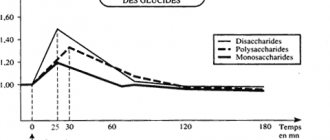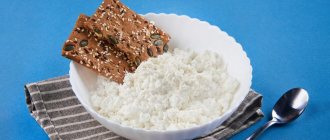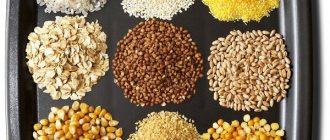Author: Timko Ilya - the ruler of the entire site and fitness trainer | more details >> Rod. 1984 Trained since 1999 Trained since 2007. Author and creator of the site tvoytrener.com. CCM in powerlifting. Champion of Russia and South Russia according to AWPC. Champion of the Krasnodar region according to IPF. 1st category in weightlifting. 2-time winner of the Krasnodar Territory championship in t/a. Author of more than 700 articles on fitness and amateur athletics. Author and co-author of 5 books.
Place in the author rating:
out of competition
(become an author)
Date:
2018-03-19
Views:
7,923
Rating:
5.0
| All articles by the author >> | Medals articles >> |
Articles are loading...
Hello everyone, I already wrote an article about comparing proteins by type of raw material (soy, casein, egg, etc.). Now it's time to compare proteins by method and/or degree of purification. The following 3 options can be distinguished:
- Isolate
- Concentrate
- Hydrolyzate
There are several more different cleaning options, but, in fact, they only lead to these 3 final results. Moreover, this gradation of proteins does not depend in any way on the type of raw material. For example, there may be soy isolate and egg isolate. Whey concentrate and beef concentrate. Well, I think you understand.
You also need to understand that the amino acid composition and quality of the protein itself largely depend on the type of protein, and not on its purification. This means that the quality and amino acid composition of whey concentrate, whey hydrolysate and whey isolate will be approximately the same. Let's now take a closer look at each of these proteins.
What is dry protein?
Surely you know that protein powder is one of the most popular supplements in the world. And if you don’t know, then you can probably guess.
And this is just... protein... in dry form. Marvelous!
Do you know how foods like chicken, fish or beef are rich in protein? Protein powder works even more effectively and is a more convenient form of protein consumption.
You just mix different types of protein (whey, casein, etc.) with any liquid (milk, water) and tadaaaam... you get protein-rich food in liquid form (a la a protein shake ).
Concentrate
The most common type of protein. A concentrate is a protein of such purification that the output is a powder with approximately 80% protein content. Accordingly, the ready-made proteins that you see on the shelves have approximately 60% - 75%, since sports nutrition manufacturers add flavoring additives and some carbohydrates to the concentrate.
Of all 3 types of proteins, concentrate is the cheapest, since it is easier to obtain. But due to the fact that it has approximately 5% fat and 5% carbohydrates already at the raw material stage, this protein is great for gaining weight, but not suitable for losing weight. After all, ready-made proteins based on concentrate usually have even more carbohydrates: about 10%.
What does protein powder do? What are its advantages?
Technically, protein powder doesn't do anything other than provide you with a convenient form of protein intake.
The benefits lie in the protein itself. Protein powder is just a high-quality, tasty, low-calorie and convenient form.
As I said before, your daily protein intake is the second most important component of your nutrition program (total calories always comes first).
Why is this so important, you ask. Here's the short answer:
- As part of overall health the functioning of your body, protein plays a significant role in the development, repair and function of organs, bones, hair, skin, blood and... yes... muscles!
- As part of building muscle mass , you need to consume large amounts of protein, without which your body will NOT be able to build (or even maintain) muscle.
- As part of weight loss , it is necessary to take enough protein daily. In this case, fat should be lost, not muscle.
- Protein also has the most satiating effect of the 3 components (carbohydrates, fats), allowing you to quickly fill up and control your appetite.
- It also has a great thermal effect . During digestion, it requires more energy, so you get more calories burned.
Overall, protein is essential for health, muscle growth, muscle retention, and weight loss. At the same time, it fills you up and helps burn calories.
Sounds good, right?
Protein powder is a quick , convenient , and easy way to make sure you're consuming the right amount each day (which is key to the benefits above).
There is no need to cook here at all. All you need to do is take a spoon, add liquid, stir for a few seconds (no blender needed) and drink.
In less than a minute, your body will receive a portion of low-calorie protein, which will prevent hunger, maintain muscle shape and increase muscle definition, without wasting effort and time.
In addition to being a more convenient way to consume protein, protein powder has a number of other advantages over protein-rich foods.
How much protein should you take per day?
To lose weight and gain muscle mass, you need to take protein in a certain dosage. And the rule does not apply here - the more, the faster the result. It is impossible to exceed the prescribed dosage - this can cause disruption of the gastrointestinal tract.
Manufacturers of sports nutrition indicate dosages on packages, depending on a person’s weight. You should follow these recommendations to get the maximum amount of benefit from the supplement.
Does it really work?
Yes. Protein works, and protein powder makes it work.
Honestly, it's like asking if chicken breasts work. Stupid, isn't it?
However, if you ask if there are any other benefits, super effects that many companies advertise. I will answer you NO. This is all complete nonsense.
Dry protein does not remove excess weight and does not increase muscle mass. Nothing like this. To put it bluntly, it does nothing other than provide your body with a significant portion of protein. Everything else is nonsense .
What is protein for?
A protein supplement is necessary to replenish protein in the body. This is especially important during active training and gaining muscle mass. Another thing you need protein for is weight loss. When taken correctly, weight loss and fat are removed from problem areas.
Why should you take protein?
- Protein from sports nutrition is absorbed better and faster than from regular foods. This allows you to gain muscle mass in a short time without additional supplements.
- Sports nutrition is convenient to use as a snack.
- Thus, protein bars perfectly satisfy hunger and do not require cooking.
- Sports nutrition also contains other components that help you lose weight and gain muscle mass.
Is protein powder safe? Are there any side effects?
For the average healthy person, protein powder is absolutely safe .
Protein powder is more of a food than a supplement. So again, think about whether it is safe to eat chicken or egg and whether it has any side effects.
No, and dry protein doesn’t have them either.
You have absolutely nothing to worry about unless you exceed your daily protein intake and unless you have instructions from your doctor (in which case you should consult your doctor before making changes to your diet).
Protein powder is probably the safest supplement.
Hydrolyzate
This is a protein that has approximately the same % protein as concentrate, but this protein has already been partially broken down into amino acids through the process of hydrolysis. If anyone is not in the know, protein consists of a rather long chain of amino acids that still need to be broken down during digestion.
That is, it turns out that the hydrolyzate breaks down faster and puts less strain on the liver and other digestive organs. In terms of effectiveness, the hydrolyzate is the same as the concentrate. Hence the conclusion that the hydrolyzate is perfect for people with problems with the gastrointestinal tract (gastrointestinal tract), such as when you can’t eat a lot of protein and put a strain on the liver. Or it will be suitable for people who, due to certain circumstances, need the fastest possible breakdown of protein.
Hydrolyzate is also expensive and is comparable in price to isolate. And another note to you: very often complex amino acids in capsules or tablets are simply pressed hydrolyzate. Keep this in mind if you want to buy these aminos for yourself. After all, compared to a regular hydrolyzate, for 1 kg of such amino acids you will overpay by another 1.5, or even 2 times.
Which dry protein is best?
There are several types of protein powder, but two of the most popular are:
- Serum
- Casein
They are both derived from milk, but there are differences between them that you need to know...
Serum
Among the two types of protein, whey is considered a “ fast ” protein. It is quickly absorbed in the body.
So if you need to get your protein fix as quickly as possible, whey is your best bet.
Such cases actually exist:
- Pre-workout (if consuming protein less than 30 minutes before workout)
- During training (necessary in certain situations)
- Immediately after training (most popular method of use).
Athletes, bodybuilders and others who want to build great bodies have been using whey protein for years and surrounding their workouts with it.
It's hard to say whether whey protein is actually better than a regular post-workout meal (I'm still on the fence about that).
In any case, whey is the protein source that is most often recommended in such cases. I myself often use the serum after training.
Casein
Casein is known as a " slow " protein. It is absorbed much slower than whey, so it is not recommended to take it before and after training (as we want fast absorption, in which case whey is better for us).
However, casein is the right choice if you are in no rush and need to digest your protein slowly.
For this reason, casein is suitable when you consume protein independent of your workout. Just as part of your daily diet.
When you combine whey with carbohydrates and fats, you will get the same result - slow absorption of food.
There is one significant benefit of casein: the last meal before bed .
During sleep, your body rests and repairs, so it needs protein.
Since you spend about 8 hours sleeping, you should pay attention to protein with slow absorption.
Now tell me, are the benefits of casein protein powder as significant as many people think? Hard to tell. However, there are cases where casein is indeed the optimal way to consume protein.
List of Protein Rich Foods
10 foods with the highest protein content
- Poultry meat – from 17 to 22 grams (per 100 grams of product)
- Meat – from 15 to 20 grams
- Fish - from 14 to 20 grams
- Seafood – from 15 to 18 grams
- Legumes – from 20 to 25 grams
- Nuts – from 15 to 30 grams.
- Eggs – 12 grams
- Hard cheese – from 25 to 27 grams
- Cottage cheese – from 14 to 18 grams
- Cereals – from 8 to 12 grams
Meat protein table
| Food product | Protein (grams) |
| Chicken | 20,8 |
| Turkey | 21,6 |
| Beef | 18,9 |
| Pork | 11,4-16,4 |
| Mutton | 16,3 |
| Boiled sausage | 10,1-13,7 |
| Smoked sausage | 16,2-28,2 |
Fish and seafood proteins
| Food product | Protein (grams) |
| Squid | 18,0 |
| Crab | 16,0 |
| Shrimps | 18,0 |
| Mackerel | 18,0 |
| Flounder | 16,1 |
| Pink salmon | 21,0 |
| capelin | 13,4 |
| Herring | 17,7 |
| Zander | 19,0 |
| Cod | 17,5 |
| Sturgeon | 16,4 |
| Bream | 17,1 |
| Pollock | 15,9 |
| Salmon | 20,8 |
| Canned fish in oil | 17,4-20,7 |
| Canned fish in tomato | 12,8-19,7 |
| Canned fish in its own juice | 20,9-28,7 |
Milk proteins
| Food product | Protein (grams) |
| Milk | 2,8 |
| Kefir | 2,8-3,0 |
| Sour cream | 2,8-3,0 |
| Yogurt | 5,0 |
| Cream | 2,8-3,0 |
| Cheese | 23,4-26,8 |
| Cottage cheese | 14,0-18,0 |
Cereals
| Food product | Protein (grams) |
| Oatmeal | 11,0 |
| Buckwheat | 10,8 |
| Rice | 7,0 |
| Millet | 11,5 |
| Pearl barley | 9,3 |
| Manna | 11,3 |
| Hercules | 13,1 |
The data given in the tables are absolute values, but the percentage of protein absorption by the body does not reach one hundred percent for everyone.
Protein Digestibility Chart
| Protein source | Digestibility coefficient |
| Milk | 100% |
| Supro isolated soy protein | 100% |
| Beef | 92% |
| Fish | 92% |
| Other isolated soy protein | 92% |
| Mechanically separated poultry meat | 70% |
| Canned beans | 68% |
| Oats | 57% |
| Rice | 54% |
| Peanut | 42% |
| Corn | 42% |
| Wheat gluten | 27% |
To find how much protein enters the body, add 50% to the above calculation, which will be 90 grams, that is, 65x1 + 50%.
When and how to eat protein?
In general, protein powder can be taken at any time of the day when you need to meet your daily requirement.
And now more details...
- Whey protein is best taken after a workout. It is also possible to take before or during training as needed.
- Casein should be taken before bed.
- In combination with other components, it is worth consuming casein or a mixture of casein and whey at any time of the day.
How to take it... Everything is simple here!
- Place the required number of spoons into a mug or bottle.
- Add liquid (water, milk, juice) according to your taste.
- Add other ingredients if necessary (optional).
- Stir for a few seconds. You can do this with a spoon or use a shaker.
- Drink your cocktail.
Which liquid is better? It doesn't matter if you consider its calorie content in your overall daily diet.
How to take protein correctly
The time and amount of taking a sports supplement depends on its type:
- Whey. Hydrolyzate should be taken before training and immediately after training. The best time to take isolate is half an hour before training. And the concentrate can be taken during training and immediately after it.
- Casein. The best time to take it to gain muscle mass is between meals and before bed.
- Complex. Take two hours before exercise.
- Protein isolate. Take in the morning, an hour before training and immediately after it ends.
Which brand is better?
When it comes to the best brand, it all comes down to quality, taste and price. Those who say that taste doesn't matter simply haven't tried this truly disgusting protein! At one time I came across one of these, half a can in the toilet! So the taste of the protein is important!
I have tried almost all of the most popular brands of protein powder, so I have a fairly broad understanding of tastes and properties.
In addition, I have seen the results of independent laboratory tests on the content of essential components in the protein powder. So I also know the differences in the quality of the products.
My recommendations
Below is what I personally use and recommend you use...
- Whey: Optimum Nutrition's 100% Whey Gold Standard Optimum Nutrition is one of the most respected companies, their whey is always a top seller and can be purchased on any website. Why? Great quality, easy to mix... and on top of everything else it tastes the best I've ever tried. I highly recommend it to you.
- Casein: Optimum Nutrition's 100% Casein Protein Another product from Optimum Nutrition, which is actually not surprising. This is the only casein I have tried in my life. After this there is no point in trying the rest. It also has high quality and a wide range of flavors.
Unfortunately, with the current economic situation in the country, not everyone can afford this protein Personally, I temporarily switched to our domestic PureProtein; in terms of price/quality ratio, I consider it quite good.
Fast and slow proteins. What's better?
Home ▸ Articles ▸ Nutrition ▸ Fast and slow proteins. What's better?
I don't think it's worth pointing out the importance of adequate protein intake during heavy training to build muscle. This is an obvious fact that even beginners quickly learn. A much more interesting topic is what is the maximum amount of protein you can consume, what is the best source of protein and what is the optimal time to consume it? The most famous debate revolves around slow- and fast-digesting proteins and their benefits for bodybuilders.
Protein sources are not the same
The first question I always ask in these types of debates is, are there really any differences, and what advantage do some have over others? There is only one answer - yes, they exist. The concept of fast and slow proteins can be compared to simple and complex carbohydrates or low and high glycemic index foods. The more complex any sugar, the slower it is absorbed and the longer it affects the body. Take, for example, a medium apple and a medium potato.
Both have about 20 grams of carbohydrates, almost no fat and protein. Yes, potatoes consist of complex carbohydrates, which are absorbed slowly, gradually and for a long time supplying their nutrients to the body. Fast carbohydrates from apples are digested and absorbed much faster. The result is an immediate rise in blood sugar and insulin levels.
Likewise, not all proteins are absorbed at the same rate. Fast and slow proteins exist, and this is important for bodybuilders trying to build mass. Fast- and slow-absorbing proteins are found in a variety of foods, meal replacements, supplements, and nutrition bars. The question then is, are the effects of their consumption clinically relevant?
For the average person, the existing differences in the rate of protein absorption are not fundamental, but for bodybuilders this is very important. Let's go back to carbohydrates and the glycemic index for a moment. Complex carbohydrates (low glycemic index) are absorbed more slowly, cause a smaller rise in insulin and are less conducive to fat deposition, therefore causing less harm to the body.
The interesting thing is that in the case of proteins it’s just the opposite.
Typically, whey protein (fast) and casein (slow) are used for comparison. Whey protein is processed by the system within a couple of hours, while casein curdles in the stomach and is absorbed much slower and longer, ensuring a uniform and long-lasting supply of amino acids to the body. Because a growing bodybuilder needs to constantly maintain high levels of amino acids in the blood, he must consume food frequently throughout the day (at least every three hours).
Therefore, we intuitively believe that fast protein has all the advantages over slow protein, and the latter has no right to be present in a well-designed nutritional program aimed at building muscle mass.
In addition, the presence of certain biological subfractions in whey protein, such as IGF-1, alpha-lactalbumin and beta-lactoglobulin, immunoglobulins and lactoferrin, makes a properly microfiltered whey protein superior in supporting the growth and overall health of a bodybuilder.
Because many of these substances are quickly broken down by the acidic environment of the stomach and small intestinal enzymes, whey protein must be supplied to the system in large doses and absorbed quickly. Apparently, there is a natural logic to this, because human milk is rich in such nutrients.
Bodybuilders are most interested in the ease and speed of protein absorption, but there is another aspect. The system needs rest - the more energy the body spends on digesting food, the less it will be left for muscle recovery and growth.
This digestive factor may be one reason why whey protein has shown a significantly greater stimulating effect on protein synthesis than casein in a number of experiments.
I'm not going to say that there is nothing good about casein. Objectively speaking, a number of studies have shown the superior anti-catabolic properties of casein in terms of inhibiting the breakdown of muscle proteins. Some experts believe that although both types of proteins cause approximately the same rise in insulin levels (some amino acids serve as non-sugar insulin stimulants), the reason may be maintaining a constant concentration of amino acids in the blood.
However, you need to get this right: if you take whey protein often enough, you will not only be able to maintain a consistently high level of amino acids in your blood, but these levels will be much higher than those provided by more infrequent servings of slow protein. Unlike the latter, the digestion factor for fast proteins is not limiting.
Slow protein
The logical question then is: what happens if you consume slow protein more frequently? Answer: At the very least, you will suppress your appetite for regular food and experience increased gas production. In the worst case scenario, you may experience stomach problems and nausea as a result of food entering your system while the previous portion has not yet been digested.
I remember well the days of my training youth, when dietary supplements with whey protein did not yet exist. Available formulas consisted primarily of casein and milk powder. I still remember my stomach bloating from hours of trying to digest this difficult mixture, and a single serving of a post-workout morning smoothie could completely discourage me from eating lunch.
In a hopeless attempt to eat enough to gain weight, we sometimes consumed so much of this product that burping tormented us for long hours. In addition, even just swallowing this mixture was almost impossible. We pushed our bodies to the limit, and sometimes I think we would have done better if we just ate normal food.
So, slow proteins can be consumed, but only in small quantities and occasionally. But if you're a serious bodybuilder trying to build muscle, building your diet around slow-release proteins like casein is a mistake. From experience, I know that slow protein is only suitable for a small number of serious, competitive bodybuilders who train hard and for long periods of time. Only such athletes can benefit from nutritional supplements based on slow-absorbing proteins.
An interesting exception would be a bodybuilder who is forced to follow a suboptimal diet and only eat 2-3 times a day. It is clear that such an athlete’s progress will be minimal, if at all. Therefore, in this case we can only talk about a supporting mode. But even the most serious bodybuilders sometimes face situations where they can't get to the gym with the regularity they need or don't have access to certain nutritional supplements. Then the solution may be a combination of fast and slow proteins in order to preserve at least what is available. Fast protein will satisfy the anabolic needs of the body, and slow protein will slow down the breakdown of fiber, maintaining the level of at least some essential amino acids in the blood. This way you can, to some extent, preserve your previous achievements until better times.
However, remember that this is an exception. If you're training optimally, you need to be eating optimally. Allow slow proteins to enter the body only from regular food. When everything is in order with training and diet, your choice should be frequent meals of fast proteins.
Recommended Accessories
It's time to talk about those accessories that may be useful to you if you plan to eat dry protein.
And this is a shaker .
A shaker is a plastic bottle with a lid and a stirring mechanism inside. You just add a few spoons of powder, add liquid and stir for 10-20 seconds.
As a result, you have a completely mixed drink (shake).
It is very cheap, easy to use, fast and convenient. I use it both at home and in training.











